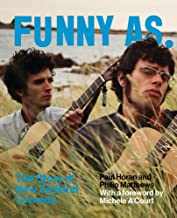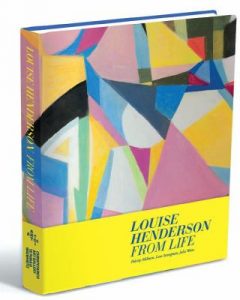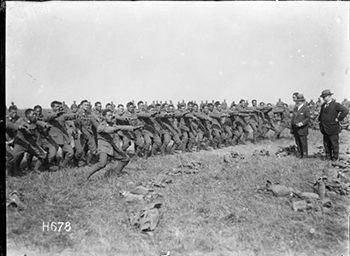 If like me you are curious about the world AND an information junkie who loves non-fiction with a strong narrative then this selection of documentary movies is for you. Without hesitation I can say that documentaries are my favourite genre of movie and the best will resonate in my mind for days, months, and years to come. Documentaries help us understand our natural and human world at the same time as entertaining and informing us. I will never forget the first time I saw Errol Morris’ The Thin Blue Line in 1989 and became aware of the power of documentary as compelling storytelling with a deeper social commentary. This personal selection below only touches the surface of the many amazing documentaries that can be found on Beamafilm and Kanopy, but I hope it provides a taste of the range and depth on offer.
If like me you are curious about the world AND an information junkie who loves non-fiction with a strong narrative then this selection of documentary movies is for you. Without hesitation I can say that documentaries are my favourite genre of movie and the best will resonate in my mind for days, months, and years to come. Documentaries help us understand our natural and human world at the same time as entertaining and informing us. I will never forget the first time I saw Errol Morris’ The Thin Blue Line in 1989 and became aware of the power of documentary as compelling storytelling with a deeper social commentary. This personal selection below only touches the surface of the many amazing documentaries that can be found on Beamafilm and Kanopy, but I hope it provides a taste of the range and depth on offer.
Herb and Dorothy
Year: 2008
Length: 87 minutes
Director: Megumi Sasaki
I love this film. The gentle story of Herbert Vogel, a postal worker, and Dorothy Vogel, a librarian, who built an important contemporary art collection from their modest and fascinating one bedroom New York apartment is truly beautiful. Its exploration of what compelled Herb and Dorothy to start collecting Minimalist and Conceptual art, with very modest means, until they had one of the most important modern art collections contained in their one bedroom New York apartment is charming and insightful. A testament to art and Herb and Dorothy’s personalities and relationship, this is a documentary that I highly recommend.
Discover more:
Oxford Art Online: Learn more about Minimalist and Conceptual art with encyclopaedia-style articles on the visual arts, including more than 21,000 biographies of artists and craftsmen, and over 5,000 searchable art images, drawings and maps. Content covers painting, sculpture, graphic arts, architecture, photography and more.
Mountain
Year: 2016
Length: 74 minutes
Director: Jennifer Peedom
Wow! This visually stunning documentary about the lure of mountains for humans is breathtaking. Willem Dafoe has the perfect voice to narrate and the soundtrack is by the Australian Chamber Orchestra and includes works works by Chopin, Grieg, Vivaldi, and Beethoven. The grandeur of the mountains is matched by the majesty of the music and the story it tells is simple and beautiful. Why we climb and go into the wilderness, and the beauty of our world’s mountains, has never been shown in a more elegant and compelling way.
Discover more:
PressReader and RBdigital: Both PressReader and RBdigital provide online access to hundreds of magazines including many on mountaineering, tramping, photography and more. If you enjoyed Mountain, you will find more to whet your outdoors appetite here.
Straws
Year: 2017
Length: 33 minutes
Director: Linda Booker
Although a short documentary, Straws packs a punch in its informative exploration of plastic pollution in our oceans. By showing how individuals, groups, and businesses around the globe are reducing plastic straw use through education, collaboration, policy development and utilisation of non-plastic alternatives, Straws helps us understand the impact of one plastic product on our environment. This optimistic and engaging documentary shows that small changes can make a difference.
Discover more:
Gale’s GREENR Global Reference on the Environment, Energy, and Natural Resources: Learn more about the physical, social, and economic aspects of environmental issues such as plastic pollution. Topics include authoritative analysis, academic journals, news, case studies, legislation, conference proceedings, primary source documents, statistics, and multimedia.
Dancer
Year: 2016
Length: 81 minutes
Director: Steven Cantor
Dancer is a fascinating character study of a virtuoso ballet dancer that demonstrates how wealth and success might not be enough to satisfy our quest for personal and professional identity. At 19, Ukrainian Sergei Polunin became the Royal Ballet’s youngest ever principal dancer. However after two years, and at the height of his success, Sergei resolved to stop dancing. Filled with amazing footage of classical and contemporary dance (including his viral performance to Hozier’s “Take Me to Church”), this is a beautiful and melancholic exploration of how growing from a child prodigy through to a successful artist does not guarantee happiness.
Discover more:
Naxos Video Library: If you love ballet, then this is for you: watch the world’s greatest opera houses, ballet companies, orchestras and artists perform on demand!
The Kingdom of Dreams and Madness
Year: 2014
Length: 118 minutes
Director: Mami Sunada
My kids grew up with Studio Ghibli movies and at 19 and 21 they still regularly watch and rewatch the magical films that have come out of the mind of Hayao Miyazaki and his team. The fantastical and beautiful animation of films such as Spirited Away, My Neighbour Totoro, Kiki’s Delivery Service, and Howl’s Moving Castle are captivating and gorgeous. This beautiful documentary looks at how Miyazaki and Ghibli became successful and asks what could come next for these talented film makers. Recommended for anyone who has enjoyed a Studio Ghibli movie or loves animation.
Discover more:
Mango Languages: Have you ever wanted to watch and enjoy Studio Ghibli movies in their original Japanese? You can start learning Japanese today with Mango Languages–available through our website and FREE with your library card.






















